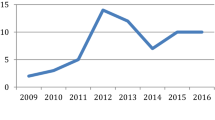Abstract
Environmental decision-making and policy-making at all levels refers necessarily to synthetic, approximate quantification of environmental properties such as vulnerability, conservation status, and ability to recover after perturbation. Knowledge of such properties is essential to informed decision-making, but their definition is controversial and their precise characterization requires investments in research, modeling, and data collection that are only possible in the most developed countries. Environmental agencies and governments worldwide have increasingly requested numerical quantification or semiquantitative ranking of such attributes at the ecosystem, landscape, and country level. We do not have a theory to guide their calculation, in general or specific contexts, particularly with the amount of resources usually available in such cases. As a result, these measures are often calculated with little scientific justification and high subjectivity, and such doubtful approximations are used for critical decision-making. This problem applies particularly to countries with weak economies, such as small island states, where the most precious environmental resources are often concentrated.
This paper discusses frameworks for a “least disappointing,” approximate quantification of environmental vulnerability. After a review of recent research and recent attempts to quantify environmental vulnerability, we discuss models and theoretical frameworks for obtaining an approximate, standardizable vulnerability indicator of minimal subjectivity and maximum generality. We also discuss issues of empirical testing and comparability between indicators developed for different environments. To assess the state of the art, we describe an independent ongoing project developed in the South Pacific area and aimed to the comparative evaluation of the vulnerability of arbitrary countries.
Similar content being viewed by others
Author information
Authors and Affiliations
Rights and permissions
About this article
Cite this article
VILLA, F., McLEOD, H. Environmental Vulnerability Indicators for Environmental Planning and Decision-Making: Guidelines and Applications. Environmental Management 29, 335–348 (2002). https://doi.org/10.1007/s00267-001-0030-2
Issue Date:
DOI: https://doi.org/10.1007/s00267-001-0030-2




